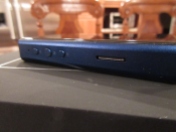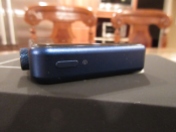Mr. Slick!
PROS: neutral signature, transparent sound, excellent build, compact slim design, duplex Bluetooth functionality, HibyLink support, battery life.
CONS: high output impedance, no internal storage, no included case.
The product was provided to me free of charge for the review purpose in exchange for my honest opinion.
Manufacturer website: Shanling, on Sale from MusicTeck and Amazon.
Also, checkout MusicTeck FREE giveaway of M2s and M1, HERE.
Intro.
Shanling has been in business for almost 30 years, developing audio products since 1988, and recently gained a lot of attention with DAP releases. This is a first time I’m testing and reviewing their product, for sure an overdue, which I almost turned down because of M2s headphone output impedance spec. I have read other opinions about pair up of high output impedance sources with multi-BAs, though never had a first-hand experience of my own to confirm it, until now. At the same time, I don’t want to sound like the focus of this review will be solely on HO spec. M2s deserves more because it impressed me with its design and a lot of features under the hood which I would like to share about in my write up. So, let’s see what I found!
Unboxing.
M2s arrived in a very compact packaging box with a clever outline of the DAP on the cover instead of the actual picture. I don’t need to remind anybody about how saturated entry level and mid-fi DAP market is. Often, what sets product apart is some unique design element or a feature that gets your attention. This silver outline brings up the attention to a control wheel on the right side of this unit. The back of the box has a brief, yet very impressive list of the features, giving you an idea of what awaits you inside.
With a cover off, you get a closeup of M2s inside of a secure foam cutout. From the first look, you quickly realize how small this DAP is. Also, it’s easy to get a wrong impression thinking it has a touch screen because of the smooth front edge-to-edge glass with a small wheel on the right side. With M2s out, underneath you will find a selection of various accessories I’m going to talk about next.
Accessories.
Here you will find 2 sets of screen protectors, considering M2s has glass surface on the front and the back. Also, a warranty and a manual, along with a quick start guide. Furthermore, you will find a microSD card USB reader, a reset push pin which also doubles as a 3.5mm headphone jack dust cover, and USB-C charging/data cable. More and more manufacturers are switching to a new USB-C standard, so an extra USB-C cable never hurts.
The only thing missing was the case. I mean, the case is available, in 4 different colors which you can get here, but it’s optional and cost another $19. This is a very nice hard-shell wrap around pleather case which I found to be a MUST for M2s. A small size and a smooth glass back makes this DAP slippery in your hand. The case improves the grip and protects the glass on the back, thanks to a soft material layer on the inside. The only comment here, I wish the cutout around HW playback controls would be a little more open for an easier access to the buttons.
Another cool optional accessory is a tempered glass screen protector designed specifically for M2s. Film screen protectors are there to prevent scratches. Tempered glass protectors prevent glass from cracks where upon impact the protector can be easily replaced while keeping the DAP’s screen untouched. This tempered glass protector is shatterproof, with oleophobic coating (to prevent oily fingerprint smudges which are easy to wipe off), 9H surface hardness, and high transparency. Pretty much, this is smartphone quality tempered glass.
While I find the case to be a must have accessory, tempered glass is just a “nice to have” optional accessory.
Design.
M2s is very small and pocket friendly, measuring only 85.5mm x 53mm x 14.5mm with a weight of about 100g. The DAP comes in 3 colors, black, blue, and red. It feels very solid in your hand, though it does feel a little slippery with a transparent glass back cover on top of the aluminum shell. The front of the DAP is also covered in glass, giving you an impression of a touch screen, though it’s not. The actual visible Retina screen area of the display is 3 inches, but the front glass extends beyond that, covering edge to edge.
The top of M2s has a power button, with a typical long press to power on/off and short press to turn screen on/off. To turn the unit on, just listen for a relay click when pressing and holding the power button. Left side has reset pinhole, followed by 3 hw playback control buttons with a large Play/Pause in the middle and smaller Skip Next/Prev buttons on each side. MicroSD card slot is toward the bottom of the left side, supporting up to 256GB (and probably the latest 400GB as well) which is the only storage due to no internal flash memory.
At the bottom, you have USB-C port which is used for charging, data transfer, as well as USB DAC input and Digital output. Next is 3.5mm headphone output which can also be selected to function as Line Out from within Settings menu. Right side at the top has a small wheel which is used for scrolling and navigation through the menus and selections. The wheel has a very precise control with a nice click action you can feel, easy to operate with a thumb, though still with enough resistance not to be loose. The wheel itself also doubles as a click button when you press on it, with a nice tactile feedback. Below the wheel is a small return button, to take you out of the current screen, like an escape button.
Overall, it’s a very nice-looking DAP, with a comfortable compact footprint, and a very efficient ergonomics of the controls enabling easy one-handed operation.
Under the hood.
Despite its small footprint, M2s is packed with a lot of features. To start off, it has a popular AKM AK4490EQ DAC, along with a very capable TPA6120 hi-fi stereo headphone amplifier from TI. And speaking of headphone amp, the output is rated at 130mW into 32ohm load which is pretty good for a small DAP. But the bittersweet of this is an output impedance of 4.8 ohms which is noticeably higher than a typical < 1ohm impedance found in many other portable DAPs. That was a part of a spec which got me a bit cautious, but I decided to let my ears be the final judge.
M2s is capable to support DSD256 playback, up to 192kHz with 24bit depth. And it also supports other lossy and lossless formats such as: APE, FLAC, ALAC, WMA, AAC, OGG, MP3, WAV, AIFF, DSF, and DIFF. Just keep in mind, DSD is supported in wired connection mode with headphones plugged in. When you switch to Bluetooth wireless headphones, DSD files are not supported due to bandwidth limitation, which makes sense.
As part of Bluetooth wireless connection, you get BT4.0 with AptX codec support. And this is Duplex BT mode where you can pair up M2s with BT wireless headphones or pair up M2s with your Smartphone or another DAP supporting BT to act as a wireless Bluetooth DAC. This could come very handy to stream Spotify or Tidal from your Smartphone, transmitting it wireless to your DAP. Or, you can use Hiby audio app with HibyLink to control your M2s remotely.
As I mentioned already, no internal storage is available, but you can use microSD card up to 256GB, and I suspect the upcoming 400GB should be supported as well. Last, but not least, the internal 1800 mAh lithium battery will give you between 9-10 hours of playback with mp3/flac files at an average listening volume. Listening to DSD files or with BT enabled will reduce the battery life, also expected. Also, full charging takes a little over 3 hours with 5V/2A charger.
Page 2: Wired/wireless connection, GUI.
Page 3: Sound Analysis, Comparison, Pair-up, and Conclusion.





























Hi can you compare it to colorfly c200?
LikeLike
C200 is much brighter in sound and more colder in tonality. But the biggest problem with C200 is lack of fw updates and relatively minimalistic functionality.
LikeLike
How would it match up to beoplay H9’s?
Thanks
LikeLike
I’m not familiar with H9, but I assume you are talking about wireless connection? That should be fine, but wired – M2s is not as high res, M3s scales up in sound quality. Maybe even look into their new tiny M0, that one supports a lot of wireless codecs and sounds damn good!
LikeLike
M2s. The audio quality is on par with iPhone 4/5/6. Low/High Gain modes are equal from SQ perspective. Steep lowpass filter should be preferred. One minor tech. issue spotted. Audio measurements that matter – http://soundexpert.org/articles/-/blogs/audio-quality-of-shanling-m2s
LikeLike
This is quite an old DAP by now ;), there are better options out there, especially with low output impedance so it won’t mess the sound, unless you are using iematch.
LikeLike